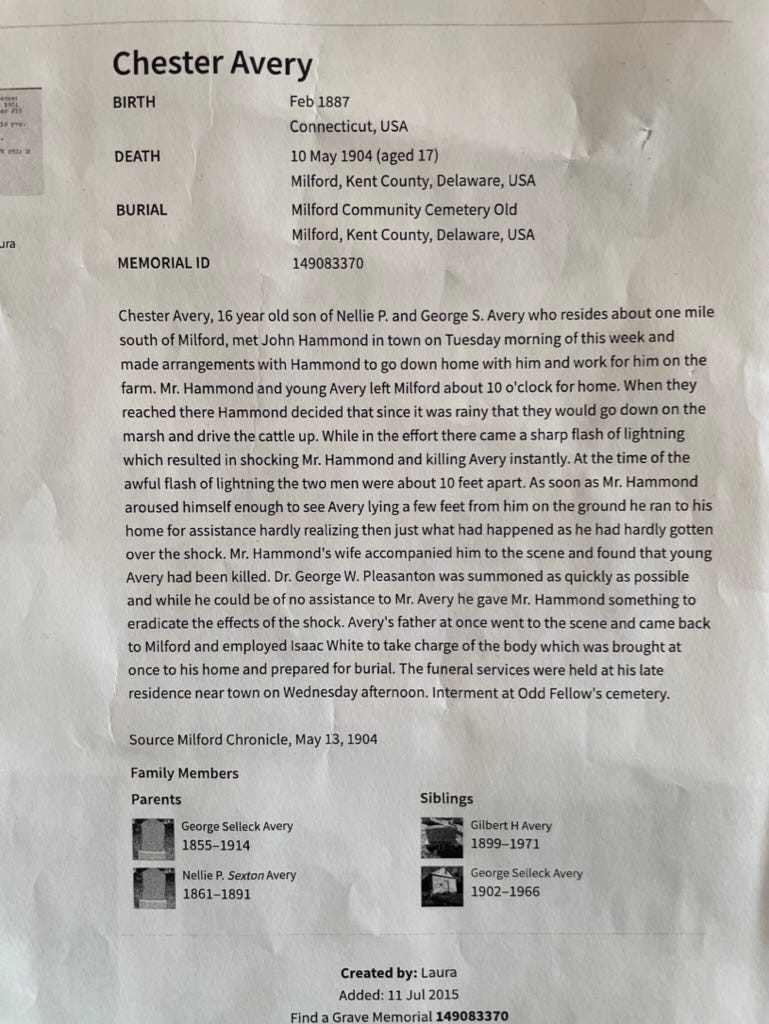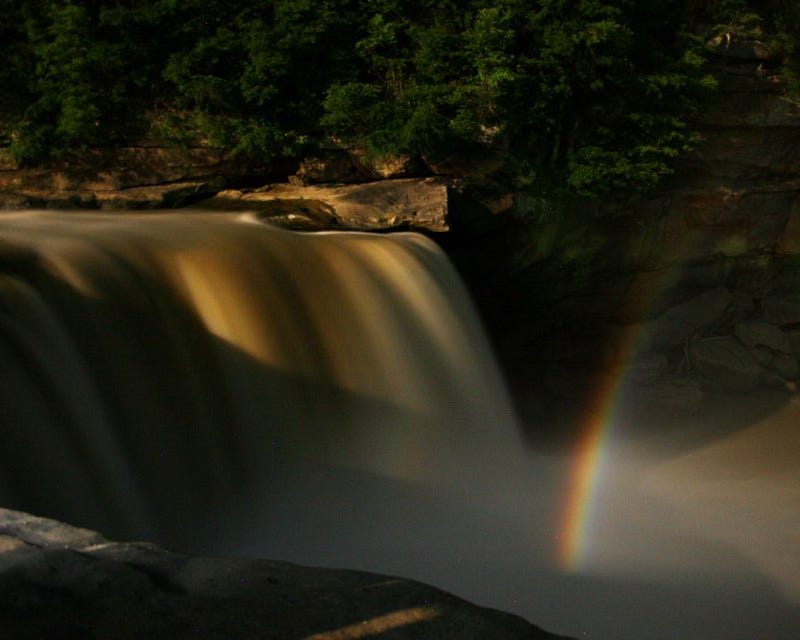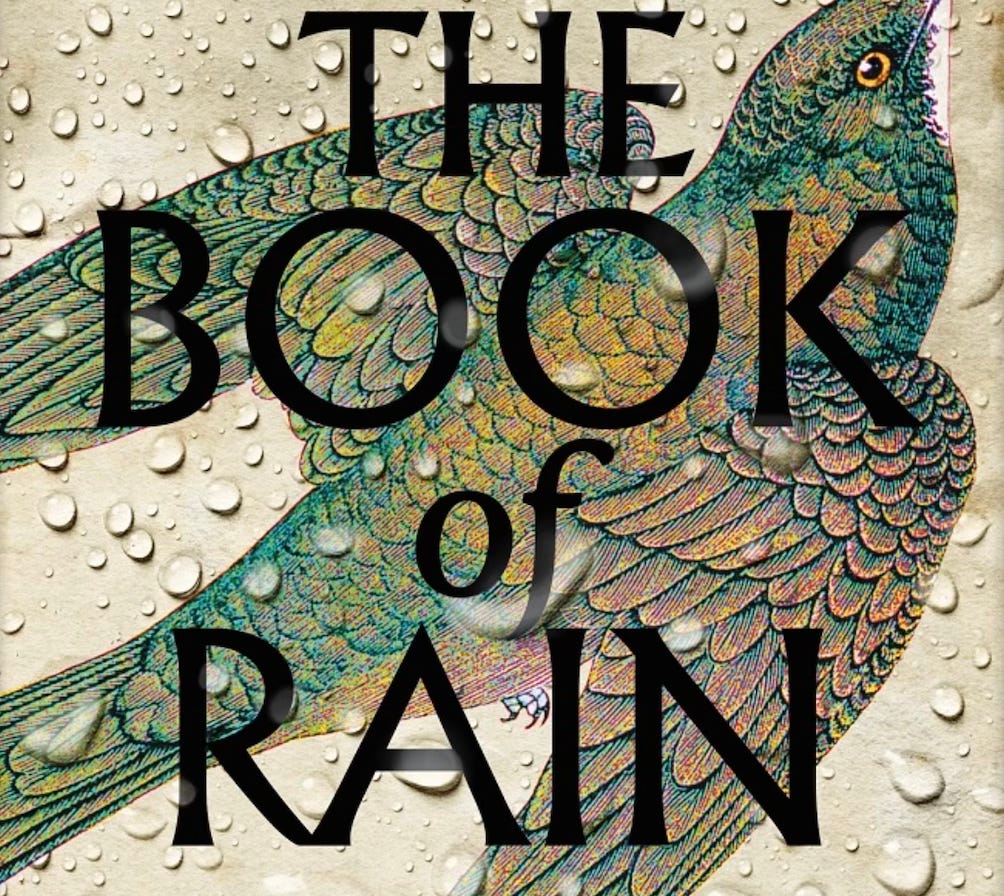In the beginning was rain.
Before the continents formed, Earth was covered entirely in water.
Before the first green tendril pushed through cracked stone, before a word was spoken anywhere on this planet—there was rain.
Rain falling into an ocean that was everywhere and held everything that would come to be.
Water had no story. The stories would come much later, when water found a vessel that would give it something called a purpose.
///
During the Carnian Pluvial Event rain fell for two million years.
There was a single continent then: Pangaea.
From the first cave paintings to the internet is a span of some 40,000 years. The Carnian rains lasted fifty times longer than that. If all of human civilization were a single day, the Carnian rains would have lasted nearly two months.
Giant crocodile-like predators called rauisuchians and phytosaurs preyed on small dinosaurs and on each other. Every day like the one before and the one after, endlessly. Hunting in the rain. Killing in the rain. Dying in the rain.
Mountains were born and worn down while the rain kept falling. Rivers carved new paths, then carved them again, then again.
And when the rain finally stopped, imagine the silence.
///
H₂O molecules spiral upward, lighter than air, lifted by solar fire.
They gather in the atmospheric ocean, condensing around microscopic dust—grains of desert sand, volcanic ash, salt from the sea, particles coughed from the lungs of dwellers in congested cities.
Each raindrop born around a story of someplace else.
///
Rainstorm over Abraham Lake, Alberta. Photo by the author.
///
Terminal velocity: 9 meters per second. The physics of falling.
There is no formula, no algorithm for the way rain sounds to me as it patters on the leaves of the red maple in my yard, or why the first scent of a summer storm takes me to a long lost day from my childhood.
The rain that drums on the roof will flow to the storm drain, to the creek, to the river, to the bay, to the ocean, to the sky, to the rain that will drum on this roof another day.
Every drop a returning traveler, carrying to the prairie where I live water from the Amazon, from the Arctic melt, from clouds ringing the summits of remote Pacific islands I will never visit.
///
(Then) decreed Shamash the hour: . . . .
Shall in the night let a plentiful rainfall pour down . . . .
(Then) do thou enter the vessel, and (straightway) shut down thy hatchway.
Came (then) that hour (appointed), . . . . . .
Did in the night let a plentiful rainfall pour down . . . .
—The Epic of Gilgamesh
///
For the Romans, rain on your wedding day was not ironic, it was a sign of fertility and good fortune.
///
Camping in the rain, circa 2010. Photo by the author.
///
A soft rain pattering on my bedroom window. The sound of being held. A child, I fall asleep to the symphony of gutters and downspouts. The rain enters my dreams. My dreams themselves begin to rain: a fall of sights, sounds, voices, flickering cascades of memory.
Who am I? my dreams ask. You are all of this, the rain answers.
///
Description of a death by lightning strike, the Milford Chronicle, May 13 1904
///
I remember once I woke up in the middle of the night to see raindrops falling slowly and silently onto my quilt at the foot of my bed. Being seven or eight I had no context to tell me this was not possible. It was simply happening.
I watched this slow silent rain for a while. I didn’t understand it, but it seemed harmless, so I went back to sleep.
I had other such visions as a child. Tiny falling toys—cars, plastic bricks, toy soldiers. Tiny people dancing on my quilt. Eventually these visions—or half-asleep hallucinations—stopped happening, and have never returned.
///
The Japanese word “tsuyu” (plum rain) refers to the rainy season in June and July, but also carries connotations of life's transient beauty. In Makoto Shinkai’s animated film The Garden of Words, the rain mirrors the characters’ feelings of loneliness and longing.
///
A faint clap of thunder
Clouded skies,
Perhaps rain comes,
If so,will you stay here with me?
—From the anime The Garden of Words by Makoto Shinkai
///
Rain in the valley of a Shinto shrine near Sendai Japan. Photo by the author.
///
I like to imagine a science of each individual thing. A science of particulars, rather than generalities. A person who studied insects wouldn’t observe a ladybug in order to learn more about ladybugs in general, but simply to learn about this particular ladybug, on this particular stalk of grass. Or that particular cloud. Or the raindrop that just landed on the back of your hand, the first of a coming storm.
And then, suddenly, too many raindrops to single out just one.
///
Whyte Avenue seen through rain on the window of a double decker bus, Edmonton, Alberta. Video by the author.
///
We were anchored off a small island, my cousin the marine biologist told me, and in the middle of the night something woke me up. I lay there for a while listening to the waves, but I couldn’t get back to sleep, so I went up on deck. The sky was clear, except for a few hurrying clouds to the west, trailing streamers of rain illuminated by the rising moon. This was a beautiful sight in itself, but as I watched, something else occurred that I had heard of, but had never seen with my own eyes until now.
As the moonlight shone through the drifting sheets of rain, a radiant arc began to form in the sky. All of the usual colours of the rainbow were visible, but much paler than those you would see in daylight.
It was like the earth had acquired a ghostly, serene ring, like Saturn.
///
Moonbow on Cumberland Falls, KY. Photo by daveblog from Flickr.
///
Sir Thomas Raffles lent his name to the world’s largest flower, Rafflesia, which bursts into full bloom only in the middle of the night, after several days of rain.
///
The winds and the shielding mountains are what make the Dry Valleys the geological oddity they are.
This is the only place in the Antarctic that is free of ice, so that you can walk on and study the actual earth of this icebound continent.
There has been next to no snowfall here as long as records have been kept, and the last time it rained was two million years ago.
Which is what farmers in southern Alberta will tell you about the weather there, too.
///
Westron wynde when wyll thow blow
the smalle rayne downe can Rayne
Cryst yf my love were in my Armys
And I yn my bed Agayne.
—16th century English folk song
///
The bristlecone pine remembers the rain on that day the Paiute woman climbed the high shelf to gather pine nuts, her basket laden with sustenance for the coming winter.
The yew remembers the choir of rain that accompanied a monk on Iona painting gold letters by candlelight.
The ginkgo remembers the downpour that drove a tea merchant’s daughter to shelter beneath its branches, clutching the letter telling her that her betrothed had fallen at the northern border.
///
Poorly recorded clip from “Rain is Falling” by Electric Light Orchestra, my all-time favourite song by this band.
///
For our honeymoon Sharon and I visited Ireland. She has family there, and I wanted to see the country of some of my favourite writers, especially Joyce (Sharon even let me choose June 16th for our wedding because it’s Bloomsday). I was such a devotee of Joyce’s great novel I wore black, like Stephen Dedalus, through the entire trip.
We were walking through Dublin seeing the sights late one afternoon when a summer storm gathered and broke. We got caught in the slashing downpour and utterly drenched, but I was elated—I felt the rain had rained just for me, the city letting me experience the thunderstorm scene from Ulysses.
On another trip some years later, this time to Paris, an evening rainstorm kept us from leaving our hotel room. That was the night our third child was conceived. We joked about naming him Paris.
///
But as before the lightning the serried stormclouds, heavy with preponderant excess of moisture, in swollen masses turgidly distended, compass earth and sky in one vast slumber, impending above parched field and drowsy oxen and blighted growth of shrub and verdure till in an instant a flash rives their centres and with the reverberation of the thunder the cloudburst pours its torrent, so and not otherwise was the transformation, violent and instantaneous, upon the utterance of the word.
—James Joyce, Ulysses
///
Mexico City (from a travel notebook):
The stones here are rougher than those of the great square, some of them still holding tiny pools from last night’s rain, like hollows in pewter-grey sand.
///
At a gallery show of contemporary art, Montreal:
A rain of static on the screen, and then:
A shape, a small body, a boy, the camera moves closer, this is in slow motion, and like every image so far, black and white, but a noticeable flickering, a washed out quality to the picture: this is old home movie footage, from the sixties or seventies, slowed down and the background blacked out. Diamond bright droplets are falling in slow motion, rain or water from a sprinkler, and the boy is lifting his head, blinking at the drops that fall in his eyes, he is what, seven or eight years old, he is trying to see through them to the person holding the camera, speaking through the water to that person who is also you, the viewer.
///
Dust from the Sahara produces red rains. Yellow rains have been traced to the Gobi Desert. Black rains can come from volcanoes or from industrial pollution.
In Kerala in 2001 rain fell that was reported by observers to be blood red, with some reports saying there was also black, yellow, and even green rain. Scientists found pigmented cells that looked like algae, leading to theories ranging from desert dust to an extraterrestrial origin.
Dirty, greasy rains turned sheep black in 19th-century Europe. It came from the soot of the great manufacturing centres in England and Scotland.
///
Crab fishing in the rain, Burrard Inlet, Vancouver. Photo by the author.
///
The weather reports earlier that day called for a storm. As predicted, wind and rain began to batter the Trinity tower on the night of July 15. The scientists were worried that the bomb test, initially scheduled for 4:00 am, would have to be postponed for several days.
The thunderstorm delayed the test until 5:29:45 a.m. on July 16.
///
In the hours after the atomic bomb exploded over Hiroshima on August 6, 1945, survivors who had fled to the hills surrounding the city looked back to see an unnatural twilight settling over the ruins.
The mushroom cloud, towering miles into the sky, had sucked up everything in its path—pulverized buildings, incinerated trees, bodies, and the earth itself, along with radioactive particles from the bomb’s core.
Then the rain began to fall.
The droplets that began to patter down were black as ink, thick and oily, staining everything they touched.
First a fire the world had never seen before. Then a new kind of rain.
///
Earth, teach me to remember kindness as dry fields weep with rain.
—Native American prayer
///
The leaves of the new lettuce wake to the first drops.
Late spring’s deluge visits the garden.
The soil opens its billion mouths to drink.
Earthworms writhe to the surface, where the robins wait under drooping boughs.
The seeds that have been sleeping for months, for years, wake and remember their names.
The tree at the end of the garden is a poem of rain written in wood.
The tree stands still and the rain moves through it like music, like time.
Each raindrop that strikes my window a word in a language that began before language.
///
Will I ever be able to say, “Today it writes,” just like “Today it rains...”?
―Italo Calvino
///
In my novel The Book of Rain I imagine a future where humanity releases billions of nanobots into the atmosphere to bind with dust and water vapour, creating “hackable” clouds that obey our instructions: blocking the sun’s rays over broiling cities and and bringing precise amounts of lifegiving rain to waiting crops.
In my novel the nanobots stop listening to us. The clouds become feral and wander where they will, with their own inscrutable purposes.
In my novel humanity forgets how to speak to the rain.
///
Detail from the cover of The Book of Rain, 2023.
///
For a long time we thought this boy
loved only things that fell
straight down. He didn’t seem to care
about anything else.
We were afraid he could only HEAR
things that fell straight down!
We watched him stand outside
in rain. Later it was said
he put a tiny pond of rainwater
in his wife’s ear
while she slept. And leaned over
to listen to it.
I remember he was happiest talking
about all the kinds of rain.
—From a story about a boy named “Rain Straight Down” by Swampy Cree historian Samuel Makidemewabe, translated by Howard Norman in his collection of Swampy Cree tales and poems The Wishing Bone Cycle, 1982.
///
We speak and give a voice to water. The rain that is in us rises as vapor from warm seas, condenses in the cold heights, falls to nourish all things that thirst below. The first drops of ancient floods run in our veins. And so much else. Bacteria. Fungal spores. Sea salt. Tiny arthropods. Cosmic dust. Sulfur. Heavy metals. Forever chemicals. Pharmaceuticals. Radioactive fallout.
We are made of the rain filtered through acid-burned leaves and drug-laced trout streams, holding the taste of industrial smokestacks and melting icecaps, the rain that washes plastic microfragments into the sea.
The rain carries it all to us, and through us, and around again. In every cell of us is the rain that spreads our poisons and also cleanses the Earth and makes everything new.
We are the rain.











I love this, Thomas. I went down a somewhat similar path with Reimagining Rain (https://jasonanthony.substack.com/p/reimagining-rain-cfd), but without your gift here of so many small powerful stories. You provide so many hooks to draw us into and under the rain, i.e. the standing under of understanding.
Beautiful as always ❤️